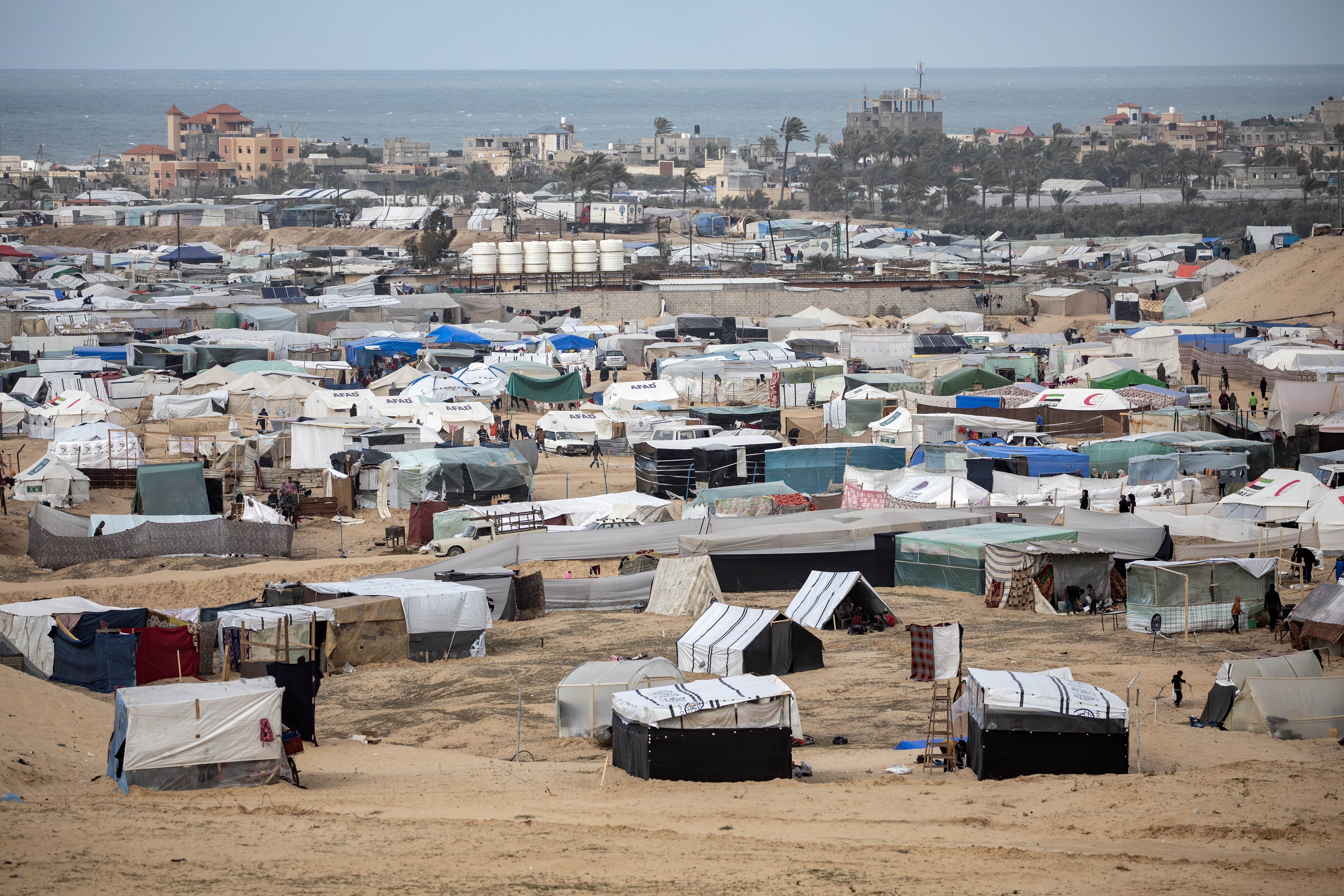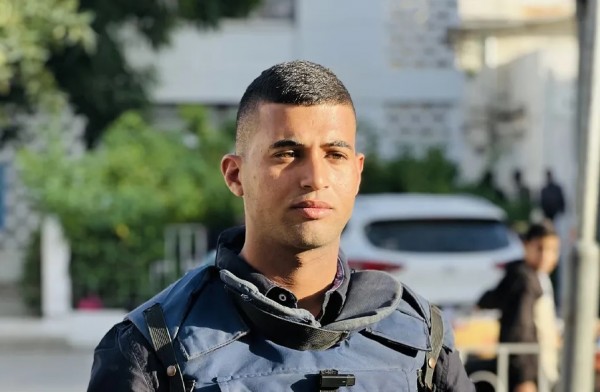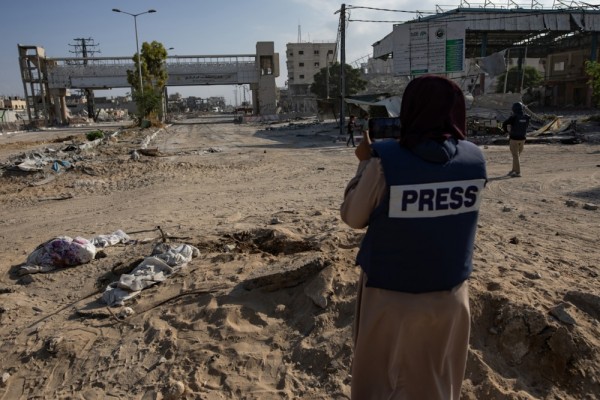[Note: Najlaa Alskafi is the managing editor of independent media organization Last Story, which is based in Gaza. Since the start of the Israel-Gaza war, Alskafi has been displaced four times and is currently living in a tent near the Rafah border crossing.]
Journalists in Gaza have been reporting since October 7 in extremely dangerous conditions, working in the face of Israeli airstrikes and snipers. They face a severe risk of attack, including the risk of being killed. Despite international calls on Israel to protect citizens and journalists, at least 85 journalists have been killed, according to the Committee to Protect Journalists, while the Gaza Government Media Office puts the number even higher, at 120.
The U.N. Human Rights Office in Occupied Palestinian Territory expressed “grave concern” about the “unprecedented rate” of Palestinian journalists killed in Gaza. Israel is suspected of deliberately targeting journalists in at least some cases, including the killing of Hamza Al Dahdouh and Mustafa Thuraya in January in Gaza and Issam Abdallah in southern Lebanon in October.
In general, the journalist community in Gaza faces various violations that have cost many their lives, while others have lost their jobs and seen their institutions destroyed. Dozens of journalists have received threats to stop their work, and many also face significant restrictions in practising journalism due to fuel shortages, power outages, and disruptions in communications and the internet.
Yet, despite these risks and threats, many journalists have continued their work, risking their lives to convey the events of the war to the world. I spoke with some of the journalists based in Gaza whose lives have been profoundly affected by the ongoing war. One of them is Duaa Al-Baz, a photojournalist working for the Turkish Anadolu Agency. She set up her mobile phone on a building in Nasser Hospital in Khan Yunis to broadcast events in real-time, facing Israeli snipers.
Despite facing the risk of death, Al-Baz continued her work using her iPhone, which operates through satellite connections via an “esim” chip after losing her camera and equipment in the bombing of Anadolu Agency’s media office in Gaza. Many independent journalists working in writing and editing struggle to access electricity and the internet.
One of them is Duaa Shahin, a reporter for Raseef22, whose home in northern Gaza suffered extensive damage. She lost her laptop but barely escaped with her family after multiple displacements. Shahin continues her work today from Rafah in southern Gaza using her mobile phone.
Shahin says, “I remained unemployed for two months due to the unavailability of internet and electricity that would allow me to continue my work. When I moved to Rafah, I stayed as a guest in a tent belonging to one of the media agencies, where I sought permission from colleagues to use the internet and electricity to charge my phone and edit journalistic materials within a few hours.”
However, Shahin, an independent journalist, prefers not to wear a press vest while working. She explains, “Journalists have become targets today. After losing my laptop, I conduct interviews and record them on my humble phone, documenting them in Word documents, and then send them by email. My phone is my capital now.”
Perhaps Shahin’s luck was somewhat better than her colleague Amal Al-Wadia, a journalist and editor for the website of the local newspaper Al-Quds. She continues her life without work, moving from displacement to displacement for about four months due to the ongoing war.
Al-Wadia says, “My daily tasks have turned from being a journalist to a girl who cooks with fire and washes her hands with very scarce water. My work stopped on October 9, 2023, due to a complete power outage and internet disconnection in the Shujaiya area, where I used to live in the eastern part of Gaza City. Our house was destroyed by Israeli shells, and we evacuated five times in a row.”
Al-Wadia and her family first evacuated to the Zaytoun neighbourhood. Then, after being notified of evacuation, they moved again to the Zahra area in the central Gaza Strip. The cycle repeated as Israeli warplanes bombed the towers of Zahra in front of them while they were sitting in the vicinity of the University of Palestine, where they were told to move.
She recounts, “We spent our night in the street, and the second day, we headed to a school (shelter center) in Deir Al-Balah. From there, we moved to an uninhabitable house in Khan Yunis, and there, under the rain of bombing and shells, we set up a tent and settled.”
Al-Wadia cannot work due to the instability she is going through and the lack of internet or electricity. The communication network is intermittently cut, along with the available street internet networks, which naturally have poor quality and cannot upload journalistic materials effectively.
On the other hand, some journalists managed to leave the Gaza Strip to save their families. Among them is photojournalist Motaz Hilal Azaiza, who announced his departure from Gaza after spending 109 days covering ongoing events under the impact of the aggression. Similarly, Wael Al-Dahdouh, a correspondent for Al-Jazeera, left after his wife and several of his children were killed, and he himself was injured.
Israeli restrictions on journalistic work did not stop here but also targeted many media institutions, according to the Palestinian Journalists’ Syndicate. The Israeli military destroyed the 14-story Watan Tower in the center of Gaza City on October 8, 2023, along with many others, including Shawa Tower and Hossary Tower, which were destroyed on the night of December 19, 2023. These towers included offices for many local media agencies.



